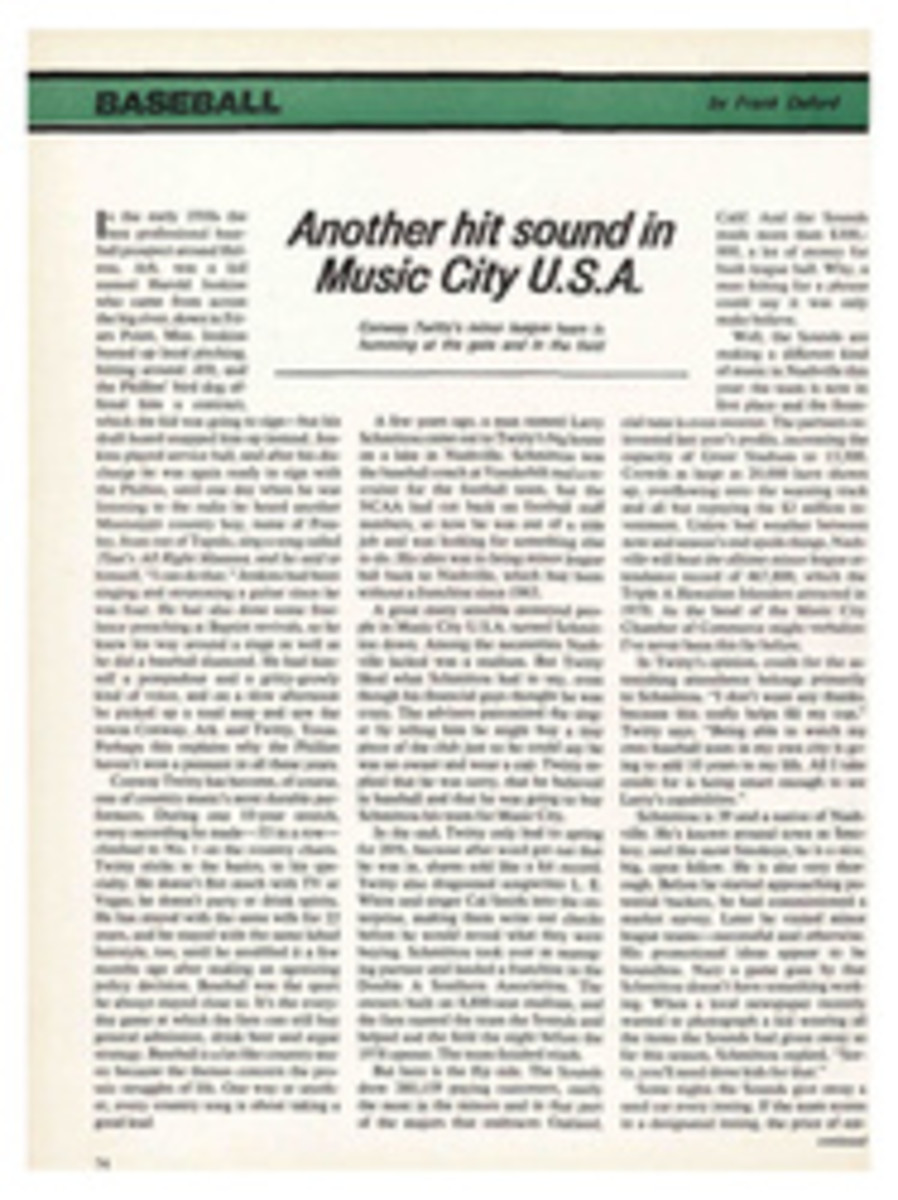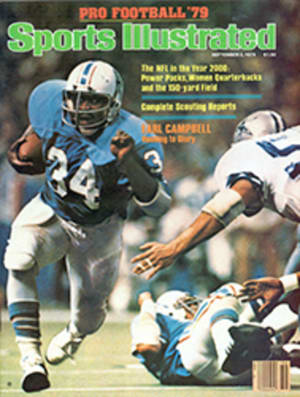
THE LEXICON OF PRO FOOTBALL
OFFENSE
AUDIBLE—A call made in code by the quarterback at the line of scrimmage to change or "check off" the play called in the huddle.
BLOCKING DOWN—A tactic that calls for a lineman to block the first opponent lined up to his "inside" in a direction away from the flow of the play.
CHOP BLOCK—A double-team tactic in which one offensive lineman "straightens up" a defensive player with a block before a back chops the defender across the legs. Pete Rozelle has urged NFL coaches not to teach the chop block because it can lead to knee injuries. But it has not been ruled illegal.
FINESSE OR INFLUENCE BLOCK—A guileful tactic to move one or more defenders in the wrong direction by some means other than physical force. For example, a right guard will pull to his left, thus occupying the attention of a linebacker, and then the play will go to the right.
FULL-HOUSE BACKFIELD—An alignment which positions three running backs, none of them flanked wide, behind the quarterback. In essence, the old T formation.
GAP—The space between two offensive linemen on the line of scrimmage.
LEAD BLOCK—One made by a running back hitting the hole ahead of the ballcarrier.
POCKET—A protective area in the backfield that the blockers establish and in which the quarterback stands while executing passing plays. A "moving pocket" insulates the quarterback as he rolls right or left.
PULL—An action taken by one or both guards, or occasionally a tackle, to provide extra blocking on a wide run or to sucker a defender out of the play. The pulling lineman vacates his customary spot in the line, runs behind and parallel to the line of scrimmage and then turns upheld to lead the ballcarrier, blocking when needed.
SCREEN—A delayed forward pass to a receiver positioned behind the line of scrimmage who has a convoy—or "screen"—of blockers escorting him.
SLOT—The area between the wide receiver and the lineman closest to him as the offense lines up.
STRONG SIDE—The side of the offense on which two or more receivers—one of them usually the tight end—line up.
TRAP—A system of blocking designed to allow a defensive lineman to penetrate across the line of scrimmage and then be hit from the side by a blocker other than the one originally stationed across from him.
TWO-MINUTE OFFENSE—A hurry-up attack featuring clockstopping passes to the sidelines and plays run off without huddling. Used by a team that's behind or tied during the final two minutes of a half The two minutes normally take 22.
TWO-MINUTE WARNING—A time-out called by the officials two minutes before the end of each half so TV networks can sell beer.
WEAK SIDE—The side of the offensive formation which has only one receiver.
DEFENSE
CHUCK—A defensive back's hit on a wide receiver. Designed to delay the receiver's release off the line or to force him to change his route, the chuck may be used just once and only within five yards of the line of scrimmage.
DOUBLE ZONE—A coverage that permits the safeties to rotate and cover either side of the held, depending on the flow of the play. Also the primary reason why the long pass is not as prevalent as it once was.
DROPS—The backward movement made by linebackers in zone coverage.
FLEX DEFENSE—An innovation of Dallas Coach Tom Landry, so named because one or two defensive linemen set up one-half to two yards off the line of scrimmage, thus allowing him or them to get a quick read of the play before initiating contact.
FREE SAFETY—Usually the deepest man in the secondary and the defensive back who covers the medium to deep zones from the weak side to the middle of the held. In man coverage his responsibility is usually the weak-side wide receiver.
MAN—A pass coverage in which the defensive backs and linebackers are assigned to cover specific receivers one on one.
NOSE GUARD—The middle defensive lineman on a three-man line.
PREVENT—A defensive alignment by the team that's ahead when time is running out, which is designed to stop the long pass while allowing short completions. It includes three pass rushers and eight defensive backs. But all too often, safe is sorry.
ROTATION—The movement of the secondary and linebackers into their areas of responsibility in a particular zone coverage.
SEAMS—The small unprotected areas between the linebackers and the secondary in a zone.
STRONG SAFETY—The defensive back normally responsible for the tight end on man coverage as well as the deep area on the strong side in zone defenses. Usually the best tackier in the secondary.
STRONGSIDE ZONE—A coverage concentrated on the two-receiver side of the offense.
ZONE—A pass coverage in which the linebackers, cornerbacks and safeties have predefined areas for which they are responsible.
3-4 DEFENSE—An alignment characterized by a three-man rush line, whose primary responsibility is to tie up blockers, and four linebackers who make most of the tackles.
4-3 DEFENSE—The defense traditionally played by most NFL teams. Features a four-man rush line and three linebackers.
53 DEFENSE—A version of the 3-4 named for Miami's Bob Matheson, who wore No. 53 during the Dolphins' 17-0 Super Bowl season of 1972. Replacing a defensive lineman, Matheson became a fourth linebacker on passing downs, giving Miami an eight-man secondary.

